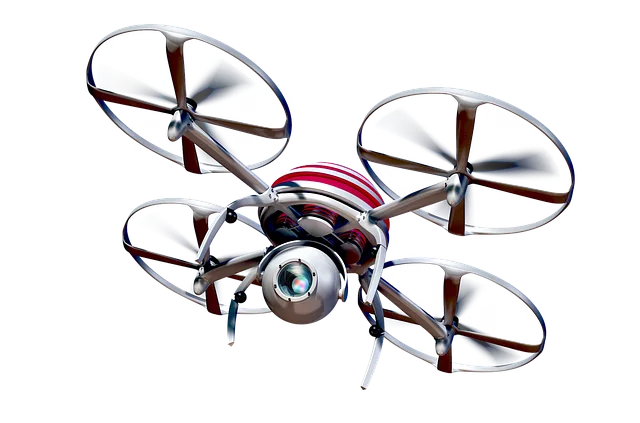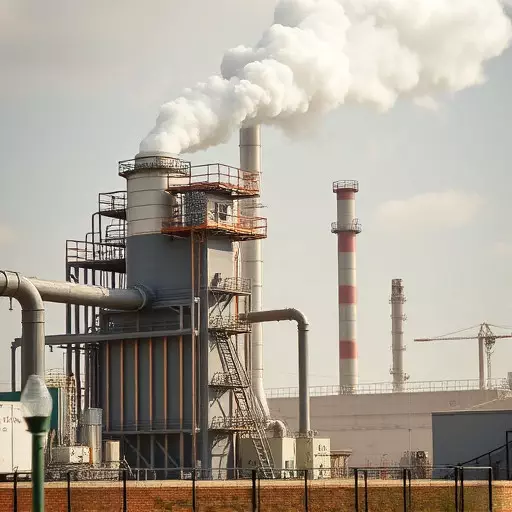Industrial activities generate significant air pollution through emissions from manufacturing processes, affecting human health and ecosystems. Air quality solutions like dust collection and emission control technologies are vital to mitigate these impacts. Advanced filtration systems, including air scrubbers, capture pollutants, ensuring clean air discharge and sustainable industrial practices. Tailored dust collection solutions and emission controls are key to meeting regulatory standards and protecting both local communities and the global environment.
Air pollution from factories poses significant environmental and health risks. Understanding industrial air pollution and its impact is crucial for implementing effective emission control strategies. This article explores comprehensive air quality solutions for industrial sites, focusing on the pivotal role of air scrubbers in factory emissions control. We delve into various types of air scrubber technologies and their applications, while also highlighting the importance of efficient dust collection systems as essential components of modern industrial practices.
- Understanding Industrial Air Pollution and Its Impact
- The Role of Air Scrubbers in Factory Emissions Control
- Types of Air Scrubber Technologies and Their Applications
- Implementing Effective Dust Collection Systems for Factories
Understanding Industrial Air Pollution and Its Impact
Industrial activities significantly contribute to air pollution, posing significant risks to both human health and the environment. Factories emit a range of pollutants, including particulate matter (PM2.5 and PM10), volatile organic compounds (VOCs), nitrogen oxides (NOx), and toxic gases like sulfur dioxide (SO2). These emissions arise from various processes such as raw material handling, manufacturing, and combustion of fossil fuels for energy generation. The impact of industrial air pollution is far-reaching; it can cause respiratory issues in workers and nearby residents, contribute to climate change by releasing heat-trapping greenhouse gases, and lead to the degradation of ecosystems.
To mitigate these adverse effects, implementing effective air quality solutions for industrial sites becomes imperative. Dust collection solutions are a fundamental aspect of this, capturing and controlling airborne particulates at their source. Emission control technologies, on the other hand, play a crucial role in reducing the release of harmful gases and compounds into the atmosphere. Advanced filtration systems, scrubbers, and specialized equipment can significantly enhance air quality by targeting specific pollutants, ensuring that factories operate responsibly and contribute to a healthier environment.
The Role of Air Scrubbers in Factory Emissions Control
Air scrubbers play a pivotal role in controlling emissions and enhancing air quality at factories and industrial sites. These advanced filtration systems are designed to capture and remove pollutants, including harmful dust particles, chemicals, and gases, from exhaust streams generated during various manufacturing processes. By implementing robust air scrubbing technologies, factories can significantly reduce their environmental impact and contribute to cleaner, healthier ecosystems.
Effective air quality solutions for industrial sites require tailored emission control technologies. Dust collection solutions, in particular, are crucial for mitigating the risks associated with airborne contaminants. Air scrubbers employ sophisticated filtration media, such as high-efficiency particulate air (HEPA) filters and carbon absorbers, to trap even the smallest particles and volatile organic compounds (VOCs). This ensures that the discharged air meets stringent regulatory standards, protecting both nearby communities and the overall environment from industrial emissions.
Types of Air Scrubber Technologies and Their Applications
Air scrubbers, or air purification systems, are essential tools in maintaining optimal air quality on industrial sites. These advanced devices play a pivotal role in managing emissions and improving overall workplace safety by filtering out harmful particles and pollutants. Several types of air scrubber technologies are available, each suited to different applications and industrial processes.
One common type is the mechanical filter system, which uses physical barriers like fabric or mesh to trap dust, smoke, and other airborne contaminants. This technology is ideal for capturing large particles and is often employed in industries such as manufacturing and construction for effective dust collection solutions. Another approach involves chemical filters, which use activated carbon or other adsorbent materials to absorb gases and volatile organic compounds (VOCs). These emission control technologies are particularly useful in chemical plants and refineries where toxic fumes need to be mitigated. Additionally, advanced air scrubbers may incorporate electrostatic precipitation or ionization techniques for more comprehensive particle removal, making them versatile air quality solutions for industrial sites across various sectors.
Implementing Effective Dust Collection Systems for Factories
Implementing effective dust collection systems is paramount for factories aiming to maintain optimal air quality on their industrial sites. These facilities often produce significant amounts of airborne particles, which can pose health risks to workers and nearby communities if not properly controlled. The right dust collection solutions are essential components of comprehensive emission control technologies, ensuring that hazardous substances are captured and contained before they enter the atmosphere.
Modern air quality solutions for industrial sites go beyond simple filtration. Advanced systems employ a range of techniques, including cyclonic separation, filter bags, and electrostatic precipitation, to trap even the smallest particles. By integrating these innovative dust collection solutions, factories can significantly reduce their environmental footprint while adhering to stringent regulatory standards. Effective emission control technologies not only protect public health but also contribute to the long-term sustainability of industrial operations.


